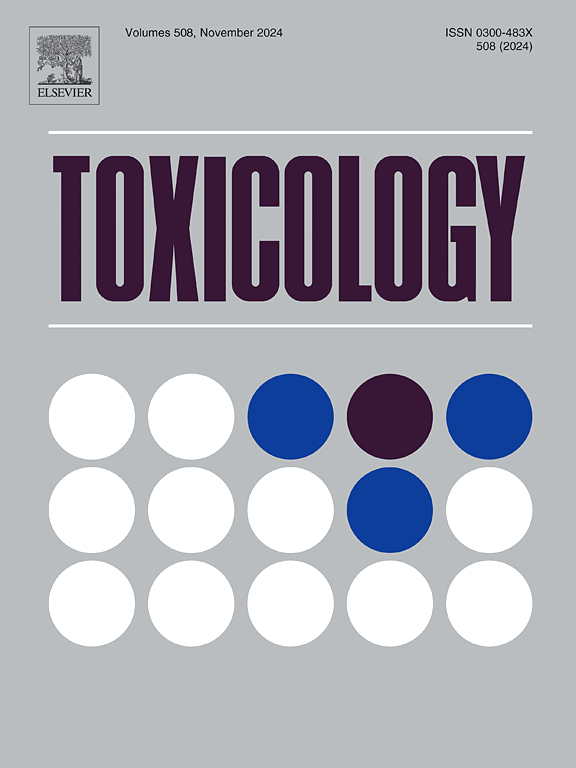1-nitropyrene triggers trophoblast dysfunction via EMPs-mediated ferroptosis through Glutathione peroxidase 4
IF 4.6
3区 医学
Q1 PHARMACOLOGY & PHARMACY
引用次数: 0
Abstract
1-Nitropyrene (1-NP), a prevalent environmental pollutant, poses significant risks to vascular and placental health. This study demonstrates that 1-NP induces vascular endothelial dysfunction by dose-dependently reducing human umbilical vein endothelial cell (HUVEC) viability, inhibiting proliferation, promoting apoptosis, and impairing tube formation. Notably, endothelial microparticles (EMPs) isolated from 1-NP-treated HUVECs (N-EMPs) exhibited distinct biological effects compared to control EMPs (C-EMPs). N-EMPs suppressed trophoblast viability, proliferation, invasion, and migration, correlating with N-cadherin downregulation and E-cadherin upregulation. Mechanistically, ferroptosis emerged as the primary driver of N-EMPs-induced trophoblast dysfunction, evidenced by reactive oxygen species (ROS) accumulation, glutathione depletion, elevated malondialdehyde and Fe²⁺ levels, and mitochondrial oxidative stress. Crucially, glutathione peroxidase 4 (GPX4) was identified as a central regulator, with its expression significantly downregulated by N-EMPs. Overexpression of GPX4 reversed ferroptosis markers (restoring GSH/SOD, reducing MDA/Fe²⁺) and rescued trophoblast viability, migration, and invasiveness. These findings establish a previously unrecognized pathogenic cascade wherein 1-NP triggers endothelial injury, releasing cytotoxic EMPs that propagate ferroptosis-dependent trophoblast dysfunction via GPX4 suppression. The central role of EMPs as mediators of environmental pollutant toxicity highlights their potential as biomarkers and therapeutic targets for mitigating placental developmental disorders caused by 1-NP exposure.
1-硝基芘通过谷胱甘肽过氧化物酶4介导的emps介导的铁凋亡触发滋养细胞功能障碍。
1-硝基芘(1-NP)是一种普遍存在的环境污染物,对血管和胎盘健康构成重大威胁。本研究表明,1-NP通过剂量依赖性降低人脐静脉内皮细胞(HUVEC)活力、抑制增殖、促进细胞凋亡和损害管形成诱导血管内皮功能障碍。值得注意的是,与对照EMPs (C-EMPs)相比,从1- np处理的HUVECs (N-EMPs)中分离的内皮微粒(EMPs)表现出明显的生物学效应。N-EMPs抑制滋养细胞活力、增殖、侵袭和迁移,与N-cadherin下调和E-cadherin上调相关。在机制上,铁死亡是n - emps诱导的滋养细胞功能障碍的主要驱动因素,通过活性氧(ROS)积累、谷胱甘肽耗竭、丙二醛和Fe 2 +水平升高以及线粒体氧化应激来证明。至关重要的是,谷胱甘肽过氧化物酶4 (GPX4)被确定为中心调节因子,其表达被N-EMPs显著下调。GPX4的过表达逆转了铁下垂标志物(恢复GSH/SOD,降低MDA/Fe 2 +),并挽救了滋养细胞的活力、迁移和侵袭性。这些发现建立了一个以前未被认识的致病级联,其中1-NP触发内皮损伤,释放细胞毒性EMPs,通过GPX4抑制传播嗜铁依赖的滋养细胞功能障碍。EMPs作为环境污染物毒性介质的核心作用突出了它们作为减轻1-NP暴露引起的胎盘发育障碍的生物标志物和治疗靶点的潜力。
本文章由计算机程序翻译,如有差异,请以英文原文为准。
求助全文
约1分钟内获得全文
求助全文
来源期刊

Toxicology
医学-毒理学
CiteScore
7.80
自引率
4.40%
发文量
222
审稿时长
23 days
期刊介绍:
Toxicology is an international, peer-reviewed journal that publishes only the highest quality original scientific research and critical reviews describing hypothesis-based investigations into mechanisms of toxicity associated with exposures to xenobiotic chemicals, particularly as it relates to human health. In this respect "mechanisms" is defined on both the macro (e.g. physiological, biological, kinetic, species, sex, etc.) and molecular (genomic, transcriptomic, metabolic, etc.) scale. Emphasis is placed on findings that identify novel hazards and that can be extrapolated to exposures and mechanisms that are relevant to estimating human risk. Toxicology also publishes brief communications, personal commentaries and opinion articles, as well as concise expert reviews on contemporary topics. All research and review articles published in Toxicology are subject to rigorous peer review. Authors are asked to contact the Editor-in-Chief prior to submitting review articles or commentaries for consideration for publication in Toxicology.
 求助内容:
求助内容: 应助结果提醒方式:
应助结果提醒方式:


